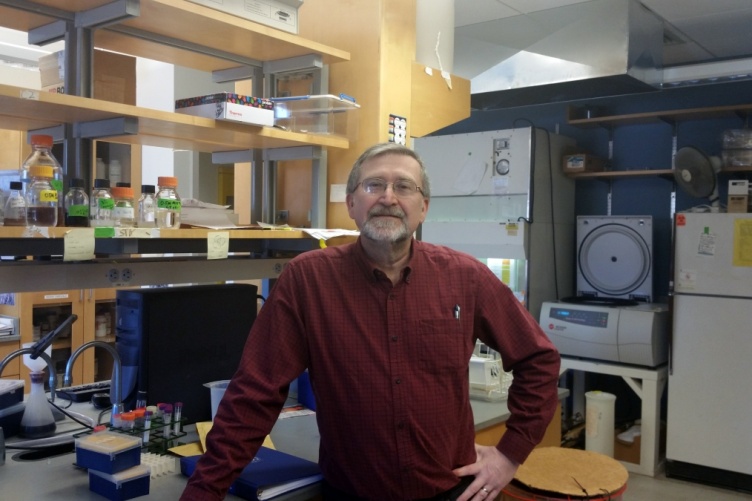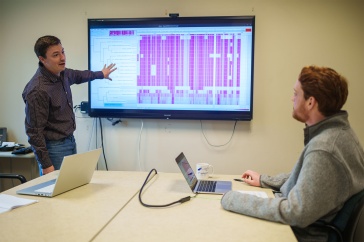
Why did you decide to become a university researcher?
I have always had an interest in biological questions and mechanisms, but initially thought that I would go into industry. When I was a technician at MSU. I interacted with the graduate students and postdocs and thought that I could do this type of work, research. Since my PhD days, I have found that I had a flair for the experimental and like to tackle challenges.
What are your current areas of research?
We are working on three different areas of research: plant-microbe, nematode-microbe and microbe-rock interactions. For the plant-microbe interaction, we are elucidating the words spoken between a beneficial microbe and its plant host. How these plants recognize friend from foes? With the nematode-microbe work, we are looking at how these bacteria switch from being symbionts of these nematodes to insect pathogens. We are exploring how these bacteria are virulent to insect and how they help these nematodes. Lastly, we started to investigate how the stone-dwelling actinobacteria are living on the surface of rocks, a very harsh environment. These bacteria have the ability to withstand high levels of UV and gamma irradiation and survive drought conditions. These bacteria have been associated with the degradation of stone monuments and buildings.
What drew you to this research? Why are you passionate about it?
Although I started as an eukaryotic microbiologist, I learned to love bacteria and all of the wonderful things that they do. Each of these projects has aspects that intrigue me and provide significant challenges toward study. The cell-to-cell communication between microbes and other organisms is fascinating and provides clues on the nature of communication in general. All of these projects have real world application. The plant-microbe system (actinorhizal plants) that we are studying have use world-wide in land reclamation for saline soils, degraded land or polluted environments. The nematode-microbe system is used a biological control agent to eliminate insect pests without the use of chemical pesticides.
What issues are you trying to address?
How these different bacteria use cell-to-cell communication for their life style is one issues that we are trying to address. Furthermore, both of the bacteria from these two systems generate natural products. These are compounds that serve as antimicrobials, but also functions other human health benefits. We are interested in identifying these natural products and their role in the life cycle of the bacterium. Besides these issues, we are trying to understand how the symbiosis with actinorhizal plants enable the reclamation of degraded, contaminated or saline soils.
What do you enjoy most about being a researcher?
There are couple of aspects that I enjoy about research. First, I love to answer questions. Second, the interaction and mentoring involved in this research is fun. I am training students at all levels graduate, undergraduate, high school and postdoctoral levels. Lastly, my research involves a lot of international collaborations, and the relationships are truly special. The exchanges between my lab and my collaborators have been wonderful.
Louis Tisa holds a Ph.D. in bacteriology from the University of Wisconsin.
-
Written By:
Lori Tyler Gula, PhD | NH Agricultural Experiment Station | lori.gula@unh.edu | 603-862-1452

















































